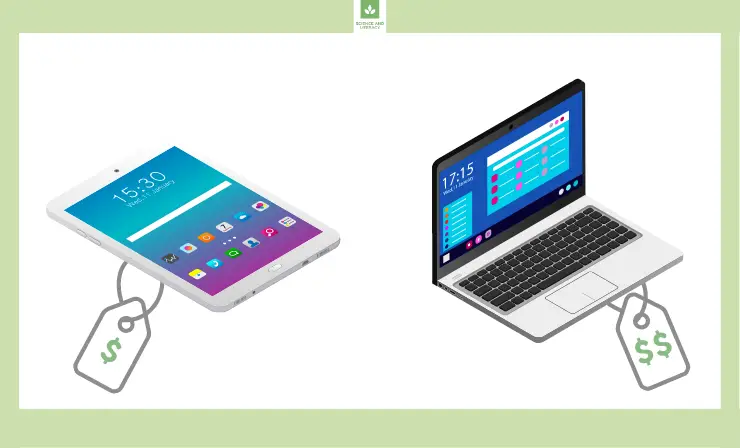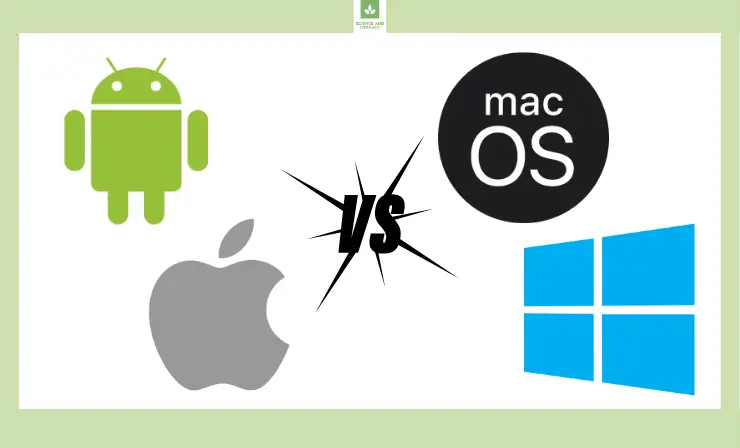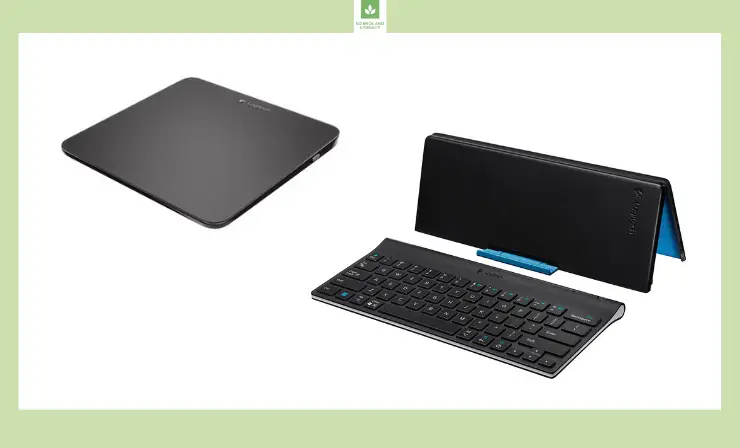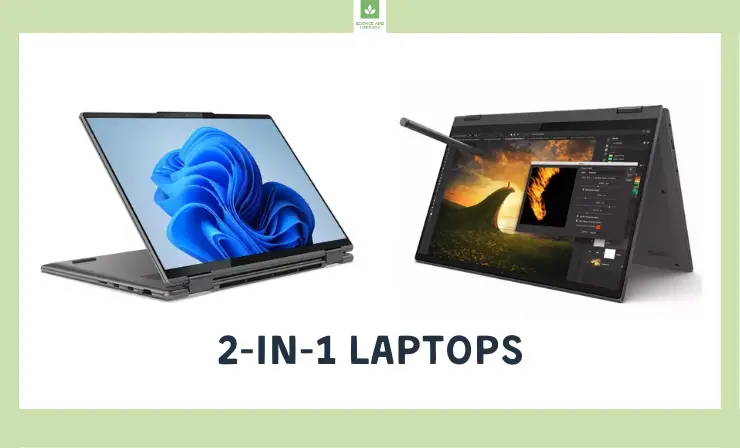As technology becomes more accessible in educational settings, a growing number of students are utilizing gadgets to enhance their learning experiences, raising the question of which is best for study, laptop or tablet. This shift offers unprecedented opportunities for accessing diverse information and acquiring new skills, transforming the traditional educational landscape. Yet, the approach to integrating technology in classrooms varies widely among schools, with some opting to provide tablets for individual students or classrooms, while others prefer the use of laptops.

This variation has sparked a significant debate among educators and students alike, revolving around the most suitable gadget for school use. As an educator with hands-on experience using both devices, I have observed distinct advantages and disadvantages for each, making the choice not so straightforward. The decision ultimately depends on various factors including the specific needs of the classroom, the educational goals, and the students’ lifestyles.
i get $2K for a computer/laptop for school. what should i get!?🧍🏻♀️
— . (@thatonecargirl_) January 17, 2024
Recognizing this complexity, I aim to provide insights and guidance through this article, helping you make an informed choice about which gadgets better suit your students’ educational needs. This decision is increasingly critical in today’s evolving academic environment, where the right technology can significantly impact learning outcomes.
After reading this article, you’ll understand:
- The difference between a laptop and a tablet →
- Various pros and cons of laptops and tablets in the classroom →
- Which is the best technological tool for the learning needs of your students →
- 2-in-1 laptops as the hybrid choice →
7 Differences Between Laptop and Tablet
Laptops and tablets may both allow students to access the internet, use educational apps, and type through word processing programs, but there are several ways these two education tools differ. These differences center around a few main categories: power, portability, battery life, performance, price, operating system, and peripherals.
1. Power
In the ongoing debate between two gadgets, power remains a key differentiator. Although tablets have made significant strides in performance, they generally can’t match the processing power of advanced laptops. This difference becomes crucial depending on the instructional needs. For example, in fields like data science or programming, where handling large datasets and complex algorithms is essential, the power of a laptop is indispensable.

For basic tasks and light applications, a modern tablet may suffice. However, when it comes to more resource-intensive operations, such as graphic design or video editing programs, laptops hold a clear advantage. They are equipped with more powerful processors, greater memory capacity, and superior graphics capabilities, ensuring smoother and more efficient running of complex applications.
Moreover, while some tablets claim compatibility with advanced software, they often struggle with the demands of these programs. Laptops, with their robust hardware, provide a more reliable and stable environment for such applications. This is particularly important in educational settings where the use of diverse software is common.
For students or educators engaged in computationally intensive tasks, the superiority of laptops in terms of power and performance cannot be overlooked. While tablets offer portability and convenience, laptops remain the go-to choice for handling more demanding computing needs in an educational context.
2. Portability
When selecting devices for your students, portability is a key factor to consider. Students often need to move between different areas within a classroom or across different rooms, making the weight and ease of carrying the device important. Younger students, in particular, may find it challenging to carry heavier laptops, increasing the risk of accidental drops and damage. Tablets, being significantly lighter, are much easier for younger students to handle and can be protected with sturdy cases to prevent damage from falls.

However, for older students, the weight difference between the two options might be less of a concern. In these cases, the decision can be based more on the functionality required rather than the weight. Still, even for older students, the ease of carrying a tablet can be a significant advantage, especially in schools with a large campus or multiple buildings.
Ultimately, when choosing between gadgets for educational purposes, it’s essential to balance the need for portability with the specific educational requirements of the students. While tablets offer convenience and ease of use, laptops provide more comprehensive features and capabilities for complex tasks. Therefore, understanding the specific needs and environment of your students will guide you in making the best choice for their educational experience.
For a detailed comparison and insights on choosing between one of the two budget gadgets, consider watching this video by TechWiser.
3. Battery Life
In the laptop vs tablet debate, one significant aspect to consider is battery life. Tablets often have the upper hand with battery life lasting up to 14 hours, whereas laptops typically offer around 6 hours of usage, and in many cases, even less. This difference can be a crucial factor in decision-making, especially considering the length of the school day and the availability of charging facilities.

If students are expected to use their device throughout a full school day without access to charging points, a tablet’s longer battery life becomes a significant advantage. Conversely, if the school day is shorter or there are ample opportunities to charge devices, then the shorter battery life of a laptop may not pose a significant issue. Additionally, it’s important to note that advancements in battery technology are continually being made, which could narrow this gap in the future.
Furthermore, the type of usage and applications running on these devices can also impact their battery life. For instance, resource-intensive tasks on a laptop might drain the battery faster, whereas tablets, typically used for lighter tasks, might conserve battery life better. Ultimately, evaluating the specific needs and daily routines of the students will guide you in choosing the device that best suits their educational environment.
4. Performance
When considering performance as a factor in choosing between gadgets for study purposes, several key differences emerge. Laptops generally offer superior processing power, making them ideal for tasks that require more computational resources. This includes running complex software for coding, graphic design, or video editing. With higher-performing CPUs and more RAM, laptops handle multitasking and demanding applications more efficiently.

Tablets, on the other hand, are designed for lighter tasks such as web browsing, reading, and basic note-taking. While recent advancements have significantly improved tablet performance, they still lag behind laptops in terms of raw processing power. This is partly due to the mobile-oriented architecture of tablet processors, which prioritizes energy efficiency over high performance.
For students whose coursework involves resource-intensive programs, a laptop is the preferred choice. Its ability to run specialized software without lag and perform multiple tasks simultaneously can be crucial for academic success. However, for students who need a device primarily for reading, researching, and light content creation, a high-performance tablet can be sufficient and more convenient due to its portability and ease of use.
The choice between gadgets for study purposes largely depends on the specific performance requirements of the student’s coursework. Laptops are better suited for power-intensive tasks, while tablets offer adequate performance for more basic academic activities.
5. Price
Price is a crucial factor when weighing the choice between gadgets for educational purposes. Generally, investing in a class set of tablets, such as iPads, proves to be more cost-effective compared to purchasing an equivalent number of laptops, like MacBooks. This affordability of tablets makes them an attractive option, especially for schools or institutions with tight budgets.

However, it’s important to note that the price can vary significantly based on the features and specifications of the tablet. Opting for tablets with advanced capabilities or higher specifications will increase the cost, potentially narrowing the price gap between the two options.
Additionally, considering the long-term costs, such as maintenance and software updates, is essential to ensure a cost-effective investment. Therefore, while tablets might initially appear as a more budget-friendly option, the final cost will depend on the required functionalities and the specific models chosen.
It’s advisable to carefully consider both the financial constraints and the technological needs of the students to make an informed decision. For more insights, Julia K Crist’s thoughts on this topic can be found in her video.
6. Operating System
The choice of operating system (OS) is a fundamental difference between educational technology, significantly impacting their functionality and suitability for various tasks. Laptops typically run on full-fledged operating systems like Windows, macOS, or Linux. These systems offer a comprehensive range of functionalities, including the ability to run complex software applications, multitasking capabilities, and extensive file management systems. Such features are essential for tasks that require robust computing power, like programming, graphic design, or data analysis.

Tablets, however, usually operate on mobile-based systems such as iOS for iPads or Android for various other tablets. These operating systems are designed for touch-based navigation and are optimized for efficiency and ease of use in consuming content, basic computing tasks, and running mobile applications. While they offer a user-friendly interface and are ideal for tasks like reading, casual web browsing, and simple content creation, they are typically not suited for heavy-duty tasks that require the capabilities of a full desktop OS.
Choosing the right operating system is crucial because it dictates the type of applications you can run, the level of task complexity the device can handle, and how the user interacts with the device. For example, students or professionals needing specific software for their work or study that only runs on a desktop operating system would need to opt for a laptop. Conversely, those who prioritize ease of use, portability, and battery life for lighter tasks might find a tablet more suitable.
7. Peripherals
The inclusion of peripherals in laptops significantly enhances their functionality and usability, especially in educational settings. Keyboards and mouse touchpads are common peripherals that can substantially improve the user experience. For instance, a physical keyboard, as opposed to a touchscreen keyboard, greatly facilitates the use of word-processing applications and other software requiring typing. This not only makes laptops more user-friendly but also assists in teaching students essential typing skills crucial for their future academic and professional lives.

Moreover, the presence of a touchpad or an external mouse can make navigation and precision tasks, like positioning the cursor in a document, easier on a laptop compared to a tablet. Touchscreens, despite their innovation and convenience, can sometimes present challenges in accurately targeting small areas on the screen. These ergonomic and functional benefits of laptops, particularly for tasks that require detailed input and navigation, make them a preferable choice in many educational contexts.
Additionally, the ability to connect to external displays and projectors easily is a significant advantage in group learning scenarios, enhancing collaborative and interactive learning experiences. Furthermore, the expandable nature of laptops, with options for additional hardware like external drives and specialized input devices, offers further adaptability to diverse educational needs.
To gain more insights on the topic, check out the following video for a comprehensive guide on the practicality of tablets for college students.
Laptop vs Tablet for College: Pros and Cons
So, are tablets or laptops best for students? To decide whether you want one gadget or another for your classroom, weigh the pros and cons of each tool. Let’s start with laptops.

Pros of Laptops
- Enhanced Software Performance: These gadgets allow for the smooth running of in-depth software programs.
- Superior Processors: They include higher-performing processors compared to tablets.
- Bigger Screens: This option offers larger screen sizes for better viewing.
- Integrated Keyboard and Touchpad: They come with a physical keyboard and touch mouse pad.
- Ample Storage: They provide increased storage space.
- Diverse Connectivity: Include multiple ports for USB drives, memory cards, Ethernet cables, etc.
- Efficient Cooling: Designed with internal fans and cooling components.
- Ideal for Advanced Education: Better suited for college students due to increased power and external keyboard convenience.
Cons of Laptops
- Limited Battery Life: They typically have a shorter battery life than tablets.
- Weight and Portability: They are heavier and less convenient for students to carry.
- Increased Damage Risk: More prone to damage if dropped by students.
- Space-Consuming Charging Stations: Laptop charging stations require more space than those for tablets (read more about Chromebook charging stations here).
- Limited Versatility: They are not as versatile as tablets in certain aspects.
- Touchscreen Availability: Not all gadgets feature a touchscreen.
- Higher Cost: Generally, they come with a much higher price point.
- Maintenance Expenses: They are more expensive to repair and maintain.
And now a few words about tablets.

Pros of Tablets
- Portability: Tablets are lightweight and more easily portable.
- Compact Charging: They require more compact charging stations than the other option.
- Damage Protection: Easier to protect against damage with cases.
- Extended Battery Life: Offer longer battery life, up to 14 hours.
- Versatility in Use: Can be used as e-readers, cameras, video recorders, and more.
- Intuitive Use: Generally more intuitive for students to use.
- Interactive Display: Easy to zoom in and out on images with fingers.
- Customizable Accessories: More options for customized accessories like Bluetooth keyboards and protective cases.
- Cost-Effective: Generally less expensive than the other gadget.
Cons of Tablets
- Keyboard Limitation: No physical keyboard, relying solely on touchscreen input.
- Responsiveness Issues: Touchscreen keyboards may sometimes be unresponsive.
- Reduced Power: Not as powerful as the other option for certain tasks.
- Software Compatibility: Not ideal for more complex software programs.
- Storage Constraints: Limited storage capacity compared to other educational gadget.
- Smaller Display: Generally smaller screen size than the other option.
Which is Better: Laptop or Tablet?
Just as there’s a debate about whether students should be allowed to use cell phones in class and the specific cell phone policies each school enacts, there is also debate over which is best for study, laptop or tablet. You can read more about using cell phones in class here and cell phone policies for schools here.
Ultimately the tablet vs laptop for students decision is yours to make. Here are a few tips that can help you decide which tool is right for the students in your class.
Tip #1
Consider the age and technological knowledge of your students. The answer for which gadgets are best for college students may well be very different from which gadgets are best for elementary school students. The answer to the question “Which gadget is better” can vary based on the age of your students. Mike O’Brien answers this question in his video.
Tip #2
Think about your purpose for using educational technology. If your students will be doing a lot of writing, you may decide that a laptop is better. If they’ll be using apps where holding the device in their hand may make accessibility easier, then a tablet may be best. Online vs in-person learning can also impact which gadget is best for your students. Their age can also play a role in making this decision.

Tip #3
Budget considerations are crucial when deciding between technology for classroom use. Tablets generally offer a more cost-effective option, both in initial purchase and long-term maintenance, compared to other options. Laptops, while offering more advanced features, come with higher costs and more expensive repair and upkeep requirements.
Tip #4
Think about how long your students will be using either tool throughout the day. Since a laptop battery can run out more quickly, you may want to reconsider this tool if your students will be using it for most of the day. However, laptops do have a better cooling system to prevent them from overheating.

Tip #5
Classroom space considerations play a role in choosing between gadgets. Laptop charging carts typically need more room compared to compact tablet charging stations. This space requirement could influence your decision, particularly in smaller classrooms where maximizing space is essential. Selecting the device that fits your classroom environment is crucial for practical and efficient use.
2-in-1 Laptops: The Hybrid Choice for Modern Education

In the context of choosing between a laptop or a tablet for college, 2-in-1 laptops present a unique alternative, combining the best of both worlds. These hybrid devices offer the functionality and power of a traditional laptop with the added benefit of a detachable or convertible touchscreen, similar to a tablet. This flexibility makes them an excellent choice for dynamic educational environments where both typing and touch-based interactions are necessary.
- Operating System: 2-in-1 laptops typically come with a full operating system like Windows or macOS, providing the same range of software capabilities as a regular laptop. This means students can run complex programs, multitask with ease, and handle demanding computational tasks without any compromise. Additionally, the touchscreen functionality enhances the learning experience, especially for subjects that benefit from a more hands-on approach, such as art, design, or interactive educational applications.
- Portability: From a portability standpoint, these devices strike a balance between the lightweight design of tablets and the robust build of laptops. They are often sleek and easy to carry, yet sturdy enough to handle the demands of a school environment. The keyboard, whether detachable or foldable, allows for a comfortable typing experience, essential for developing typing skills and completing written assignments.
- Battery Life: 2-in-1 laptops typically feature a battery life that varies across models, with many offering long usage times to support a full school day. The presence of multiple ports for connectivity further adds to their versatility, allowing for easy integration with other educational tools and devices.
- Price: 2-in-1 laptops can be more expensive than standard options, but their dual functionality justifies the investment. They provide a cost-effective solution for educational institutions looking to equip their students with versatile, high-performance devices that cater to a wide range of learning styles and activities.
Overall, 2-in-1 laptops serve as an excellent alternative for educational settings, offering the combined benefits of both gadgets in one adaptable and efficient device.
For additional insights on 2-in-1 laptops, you might find PCMag’s video informative. It provides a detailed overview and analysis that could help understand these devices better.
Useful Resources
- Laptop vs tablet for college students: which is best
- 10 examples of modern classroom technology
- 5 advantages of using tablets for digital learning
Conclusion
Both options can be powerful learning tools. Deciding between which is best for study, laptop or tablet, and which is best for your classroom can vary based on the age of your students and how you see yourself using the technology in your classroom. You can also always consider investing in a mix of two gadgets to get the best of both worlds and give your students experiences using multiple tools!
- Overview of 22 Low-Code Agencies for MVP, Web, or Mobile App Development - October 23, 2024
- Tips to Inspire Your Young Child to Pursue a Career in Nursing - July 24, 2024
- How Parents Can Advocate for Their Children’s Journey into Forensic Nursing - July 24, 2024

I found this article really helpful on breaking down some of the pros and cons associated with using tablets and laptops in the classroom. What are your thoughts on laptops with a removable screen?
I think the convertible laptops with a detachable screen can help you enjoy the best of both worlds. They have an attached keyboard, which makes typing much easier for students, but can also work as a handheld device for reading or using different apps.
article is quite interesting but comparison between laptop & tablet is unfair, although both have it usefulness in different scenario
Thanks for the feedback!